
ELECTRIC ACTUATORS FOR INDUSTRIAL PROCESS CONTROL
80-1100-00
Rev. 03.8
INSTRUCTION MANUAL
11-1__
11-2__
11-3__
11-4__
MODELS
R
For actuators manufactured
after 10/01/17.

80-1100-00, Rev. 03.8
2
This manual contains the information needed
to install, operate, and maintain Beck Group 11
actuators, manufactured by Harold Beck & Sons,
Inc. of Newtown, Pennsylvania.
The Group 11 actuator is a powerful control
package designed to provide precise position
control of dampers, valves, uid couplings and other
devices requiring up to 1,800 lb-ft (2 440 N•m) of
actuator torque. Exceptionally stable and trouble-
free, these rotary actuators are in use throughout
the world in valve and damper applications.
INTRODUCTION
IMPORTANT: This manual contains information
that will make installation simple, efficient,
and trouble-free. Please read and understand
the appropriate sections in this manual before
attempting to install or operate your actuator.
This manual, along with Beck Manual Supplement
80-1100-14, is provided with applicable Group 11
& Group 11E hazardous location actuators.

80-1100-00, Rev. 03.8
3
Introduction ...................................................................................................................... 2
General Specications ....................................................................................................4
Outline Dimension Drawings ..........................................................................................6
Summary of Control Options ........................................................................................12
Precautionary Information ............................................................................................13
Component Location ..................................................................................................... 14
Installation ...................................................................................................................... 15
Mechanical .................................................................................................................15
Electrical ....................................................................................................................18
Wiring .........................................................................................................................20
Start-up ...........................................................................................................................26
Operation ........................................................................................................................ 27
Calibration ......................................................................................................................29
Switches.....................................................................................................................30
Direction Change ......................................................................................................32
Feedback Signal ........................................................................................................34
Demand Signal ..........................................................................................................37
Maintenance ...................................................................................................................42
Routine .......................................................................................................................42
Component Replacement .........................................................................................43
Component Detail .....................................................................................................51
Spare Parts & Part Numbers .................................................................................... 54
Troubleshooting .............................................................................................................56
Appendices ....................................................................................................................59
CPS-5 Functional Block Diagrams ..........................................................................59
CPS-5 Data .................................................................................................................60
Index ...............................................................................................................................62
Services ..........................................................................................................................63
TABLE OF CONTENTS

80-1100-00, Rev. 03.8
4
Actuator
Power
120 V ac, single-phase, 60 Hz (Standard), 50 Hz (Optional)
208, 240, 380, 415, 480 & 575 V ac, 50 or 60 Hz (Optional)
Allowable Tolerance +10%
-15%
Maximum Current (Amps) by Model*
Voltage (V ac)
Model Maximum
Power (W) 120 208 240 380 415 480 575
11-15_ / 11-16_ 50 0.45 0.26 0.23 0.14 0.13 0.11 0.09
11-20_ / 11-26_
11-30_ / 11-36_ 104 0.88 0.51 0.44 0.28 0.25 0.22 0.18
11-40_ / 11-46_ 400 3.10 1.79 1.55 0.98 0.89 0.78 0.65
*For specic motor currents, see page 54.
Operating Conditions -40° to 85°C (-40° to 185°F)
0 to 100% relative humidity
Demand Signal Options, with
Electronic Signal Receiver (ESR-5)
0–5 mA, 1–5 mA, 4–20 mA, 10–50 mA, 1–5 V dc, -10 to 10 V dc
Demand Signal Span Adj. 50% to 400% of span (except -10 to 10 V dc)
Demand Signal Zero Adj. -100% to +275% of span (except -10 to 10 V dc)
Deadband 0.6% of span (recommended deadband for most applications). Narrower
and wider deadbands are available.
Sensitivity 25% of deadband.
Direct AC Control 120 V ac for 2-position, multi-position or modulating V ac control
Feedback Signal Options, with
Contactless Position Sensor
(CPS-5)
1–5 mA, 4–20 mA, 10–50 mA, 1–5 V dc, 0–16 V dc, -10 to +10 V dc
Output Stability 0.25% of span from 102 to 132 V ac
±0.03% of span/°C for 0 to 50°C, ±0.05% of span/°C for -50° to 85°C
Linearity ±1% of span, max. independent error
Hysteresis
Isolation
Film Potentiometer
Max. Voltage
Wattage
Linearity
Max. Wiper Current
0.25% of span at any point
Max. leakage of 10 µA at 60 V rms, 60 Hz from output to ground
1,000 ohms
40 V
2 W max.
±0.5%
1 mA
GENERAL SPECIFICATIONS

80-1100-00, Rev. 03.8
5
Action on Loss of Power Stays in place.
Action on Loss of Input
Signal (Power On)
Stays in place or moves to full travel or zero position. Drives to any
preset position with optional switch assembly on Models 11-__7 and
11-__8. Field adjustable.
Stall Protection and
Annunciation (Optional)
If the motor tries to run in one direction for more than 300 seconds, the
Stall Protection Module will shut o power to the motor and a solid state
relay will change state. The relay is rated for 120 V ac or dc, 10 VA.
Limit Switches Two SPDT, one for CW and one for CCW limit of travel. Actuators
having position sensing capability (Options 5 thru 8), have over-
travel limit switches set 1/2° outside the CW and CCW travel range
(typically, -0.5° and 100.5° or 90.5°). Actuators without position
sensing (Options 3 and 4), have end-of-travel limit switches set at the
CW and CCW travel range (typically, 0° and 100° or 90°).
Auxiliary Switches Up to four 6 A, 120 V ac (0.5 A, 125 V dc) switches available.
Switches are labeled S1-S4 and are cam-operated, eld-adjustable.
S1 and S4 are set to operate just before reaching the CCW travel
limit. S2 and S3 are set to operate just before reaching the CW travel
limit.
Handswitch Permits local electrical operation, independent of controller signal.
Standard on all units. An auxiliary contact is available as an option for
remote auto indication (rated 2.5 A at 120 V ac; 2.0 A at 28 V dc).
Handwheel Provides manual operation without electrical power.
Motor Assembly 120 V ac, single-phase, no-burnout, non-coasting motor has instant
magnetic braking. Requires no contacts or moving parts. Can remain
stalled for approx. 4 days (cumulative) without damaging the gear train.
Gear Train High-eciency, precision-cut, heat-treated alloy steel and ductile iron
spur gears. Interchangeable gear modules permit eld change of
torque and timing.
Mechanical Stops Prevent overtravel during automatic or manual operation.
Enclosure Precision-machined, aluminum alloy castings coated with
corrosion-resistant polyurethane paint, provide a rugged, dust-tight,
weatherproof enclosure. Actuators designed for hazardous classied
locations are also available. Type 4X; IP66/IP68, 3 meters/48 hours*.
*Internal water damage is not covered by warranty.
Maximum Output Shaft
Rotation
100 degrees (Models 11-15_, 11-20_, 11-30_, 11-40_)
90 degrees (Models 11-16_, 11-26_, 11-36_, 11-46_)
Mounting Orientation Any orientation—no limitations.
Standards** CSA Labeled (US & Canada); CE Compliant
**NOTE: May not be available with all options and models. For more information, please call Beck at 215-968-4600.

80-1100-00, Rev. 03.8
6
Recommended Screw Torques
Torque
Screw
Size
(in.)
Wrench
Size
(in.)
lb-ft N•m
Crank Arm Screw 1/2-13 3/4 75 102
Rod End Screw 1/2-13 3/4 35 47
Rod End Lock Nut 1/2-13 3/4 55 75
Body Screw 5/16-18 1/2 10 14
Body Screw 3/8-16 9/16 20 27
Cover Screw 5/16-18 1/2 10 14
Motor / Gear
Module Screw 1/4-20 7/16 6 8
Model 11-15_ Crank Arm
Part Numbers & Model Information
Crank Arm Assembly 10-3491-05
Crank Arm 10-3491-02
Crank Arm Screw (1) 30-0306-56
Washer (2) 30-0313-03
Wedge 11-8060-02
Rod End Screw 30-0306-56
Rod End Lock Nut 30-0309-11
Rod End 12-2840-02
Dim. "L" (Length) 2 1/8" (54 mm)
Dim. "T" (Thread) 1/2-20 x 1-3/16" (30 mm)
Output Shaft Diameter 3/4" (19 mm)
Approximate Weight 50 lbs (23 kgs)
Max. Overhung Load 750 lbs
(340 kgs)
MODEL 11-15_ SPECIFICATIONS
6
8
10
4
2
0
10
8
6
4
2
0
6 7/8"
(175 mm)
4"
(102 mm)
34
COVER, ELECTRONIC
SIGNAL RECEIVER
(ALLOW 4" (102 mm)
FOR REMOVAL)
COVER,
TERMINAL BLOCK
EXTERNAL WIRING
COVER, POSITION
SENSING DEVICES
4 1/2"
(114 mm)
4 1/2"
(114 mm)
4"
(102 mm)
11 5/8" (295 mm)
(ALLOW 6" (152 mm)
FOR REMOVAL)
HANDSWITCH
4 1/4"
(108 mm)
1" N.P.T.
CONDUIT,
POWER
CONNECTION 2 3/16"
(56 mm)
1" N.P.T.
CONDUIT,
SIGNAL
CONNECTION
HANDWHEEL
GEAR MODULE /
MOTOR ASSEMBLY
1/2"
(13 mm)
13/32" (10 mm) DIA.
(4) HOLES
1/2" (13 mm)
7"
(178 mm)
1 3/4" (45 mm)
2 1/4" (57 mm)
LINKAGE C
L12 7/8" (327 mm) MAX.
(ALLOW 4" (102 mm)
FOR REMOVAL)
3 9/16" (90 mm)
R
L
T
13 1/2"
(343 mm)
11 1/16"
(281 mm)
ROD END SCREW
ROD END
WASHER (2)
WEDGE
ROD END
LOCK NUT
Crank Arm
CRANK ARM
SCREW
R
ADJUSTABLE RADIUS "R" 1 1/2" (38 mm) TO 5 1/8" (130 mm)
L
6"
(152 mm)
OUTLINE DIMENSION DRAWINGS

80-1100-00, Rev. 03.8
7
Recommended Screw Torques
Torque
Screw
Size
(in.)
Wrench
Size
(in.)
lb-ft N•m
Coupling Screw - -- * *
Mounting Bracket
Screw (Flat Head) 3/8-16 - 25 34
Body Screw 5/16-18 1/2 10 14
Body Screw 3/8-16 9/16 20 27
Cover Screw 5/16-18 1/2 10 14
Motor / Gear
Module Screw 1/4-20 7/16 6 8
*Varies per application. Refer to the valve mounting specication sheet
shipped with your actuator.
Model Information
Approximate Weight 56 lbs. (25 kg)
Maximum Overhung Load 750 lbs. (340 kg)
MODEL 11-16_ SPECIFICATIONS
TYPICAL VALVE MOUNTING
7 1/2"
(191 mm)
1" N.P.T.
CONDUIT,
SIGNAL
CONNECTION
1" N.P.T.
CONDUIT,
POWER
CONNECTION
2 3/16"
(56 mm)
2 7/16"
(62 mm)
GEAR MODULE /
MOTOR ASSEMBLY
4 7/16" (113 mm)
3/4" (19 mm) OR 1 1/2" (38 mm) DIA.
1 15/32
(37 mm)
COVER, ELECTRONIC
SIGNAL RECEIVER
(ALLOW 4" (102 mm)
FOR REMOVAL
6 7/8"
(175 mm)
13 1/4"
(337 mm)
3 1/4"
(83 mm)
MOUNTING HOLES
3/8-16 UNC-2B x 1/2" (13 mm) DEEP
(4) HOLES EQUALLY SPACED
ON A 5" (127 mm) DIA. B.C.
11 5/8" (295 mm)
(ALLOW 6" (152 mm)
FOR REMOVAL)
45°
COVER, POSITION
SENSING DEVICES
HANDSWITCH
COVER,
TERMINAL BLOCK
EXTERNAL WIRING
HANDWHEEL
9 3/8" (238 mm) MAX.
(ALLOW 4" (102 mm)
FOR REMOVAL)
3 7/8" (98 mm)
+.001" (.03 mm)
–.000

80-1100-00, Rev. 03.8
8
Recommended Screw Torques
Torque
Screw
Size
(in.)
Wrench
Size
(in.)
lb-ft N•m
Crank Arm Screw 5/8-18 15/16 240 325
Crank Pin / Stud 3/4-16 1-1/8 300 407
Crank Pin Screw 3/4-16 1-1/8 300 407
Rod End Lock Nut
(11-20_) 1/2-20 3/4 35 47
(11-30_) 5/8-18 15/16 65 88
Body Screw 3/8-16 9/16 20 27
Body Screw 1/2-13 3/4 50 68
Cover Screw 5/16-18 1/2 10 14
Motor Screw
(Hex Wrench) 1/4-20 3/16 6 8
Gear Module
Screw 5/16-18 1/2 10 14
Model 11-20_ / 11-30_ Crank Arm
Part Numbers & Model Information
11-20_ 11-30_
Crank Arm Assembly 14-7330-40 14-8010-34
Crank Arm 14-8008-05 14-8008-01
Crank Arm Screw (2) 30-0308-75 30-0308-75
Clamp Plate 14-9883-01 14-9883-01
Crank Pin / Stud 14-9920-06 14-9920-07
Crank Pin Screw 30-0308-61 30-0308-61
Nut Plate 14-9883-02 14-9883-02
Rod End Lock Nut 30-0309-19 30-0309-23
Rod End 12-2840-02 12-2840-03
Dim. "L" (Length) 2 1/8" (54 mm) 2 1/2" (64 mm)
Dim. "T" (Thread) 1/2-20 x
1-3/16" (30 mm)
5/8-18 x
1-1/2" (38 mm)
Output Shaft Diameter 1 1/2" (38 mm) 1 3/4" (44 mm)
Approximate Weight 120 lbs (54 kgs) 125 lbs (57 kgs)
Max. Overhung Load 3,000 lbs
(1,361 kgs)
4,500 lbs
(2,041 kgs)
NUT PLATE
CLAMP PLATE
CRANK PIN / STUD
ROD END LOCK NUT
CRANK PIN SCREW
CRANK ARM SCREW (2)
Crank Arm
AUX. SWITCH RATING:
10A 240 Vac
1" N.P.T.
CODUIT,
POWER
CONNECTION
6 7/32"
(158 mm)
4 25/32"
(121 mm)
1" N.P.T.
CONDUIT,
SIGNAL
CONNECTION
NAMEPLATE
MOTOR
T
18"
(457 mm)
15 5/8"
(397 mm)
L
R
6"
(153 mm)
5 5/8"
(143 mm)
6 1/2"
(165 mm)
3/4"
(19 mm)
3/4"
(19 mm)
7/8"
(22 mm)
4 1/4"
(108 mm)
11 3/8" (290 mm) MAX.
(ALLOW 3" (76 mm)
FOR REMOVAL)
4 3/4"
(121 mm)
LINKAGE C
L
10
10
2
2
4
4
6
6
8
8
0
0
COVER,
TERMINAL BLOCK
EXTERNAL WIRING
COVER,
ELECTRONIC
SIGNAL
RECEIVER
COVER,
POSITION
SENSING
DEVICES
HANDSWITCH
GEAR MODULE
ASSEMBLY
34°
5 1/2"
(140 mm)
6 3/8"
(162 mm)
6 3/8"
(162 mm)
5 1/2"
(140 mm)
12 3/4"
(324 mm)
12 1/4" (311 mm)
(ALLOW 6 " (152 mm)
FOR REMOVAL)
11/16" (17 mm) DIA.
(4) HOLES
9 1/4"
(235 mm)
R
L
ADJUSTABLE RADIUS "R"
3 1/2" (89 mm) TO 8" (203 mm) ROD END
CRANK
ARM
SCREW (2)
MODEL 11-20_ & 11-30_ SPECIFICATIONS
OUTLINE DIMENSION DRAWINGS

80-1100-00, Rev. 03.8
9
Recommended Screw Torques
Torque
Screw
Size
(in.)
Wrench
Size
(in.)
lb-ft N•m
Coupling Screw 5/8-18 15/16 * *
Mounting Bracket
Screw (Flat Head) 1/2-13 - 50 68
Body Screw 1/2-13 3/4 50 68
Body Screw 3/8-16 9/16 20 27
Cover Screw 5/16-18 1/2 10 14
Motor Screw
(Hex Wrench) 1/4-20 3/16 6 8
Gear Module
Screw 5/16-18 1/2 10 14
*Varies per application. Refer to the valve mounting specication sheet
shipped with your actuator.
MODEL 11-26_ & 11-36_ SPECIFICATIONS
NAMEPLATE
1” N.P.T.
CONDUIT
SIGNAL
CONNECTION
1” N.P.T.
CONDUIT
POWER
CONNECTION
9 21/32”
[245]
10”
[254]
AUX. SWITCH RATING:
10A 240 Vac
HANDWHEEL
GEAR MODULE
ASSEMBLY
SEE
TABLE
BELOW
2 1/8”
[54]
4 7/16”
[113]
Ø1.956 +.004
–.000
[Ø49.682 ]
+.102
–.000
7 3/8”
[187]
8 1/8” [206] MAX.
(ALLOW 3” [76]
FOR REMOVAL)
DIMENSION
DEPENDENT
ON VALVE
SIZE
DIMENSION
DEPENDENT
ON VALVE
SIZE
COVER,
ELECTRONIC
SIGNAL
RECEIVER
COVER, POSITION
SENSING DEVICES
MOUNTING HOLES
1/2-13 UNC-2B x 3/4”
[19] DEEP (4) HOLES
EQUALLY SPACED
ON A 5” [127] DIA. B.C.
COVER,
TERMINAL BLOCK
EXTERNAL WIRING
HANDSWITCH
45º
12 1/4”
[311]
(ALLOW 6” [152] FOR REMOVAL)
12 3/4”
[324]
5 5/8”
[143]
18”
[457]
Model Information
Model
No.
Torque
Range
Approx.
Weight
Maximum
Overhung
Load
Output
Shaft
Diameter
11-260
125–250
(lb-ft) 120 lbs. 3,000 lbs. 1.500 in.
(+.001/-.000)
169–339
(N•m) 54 kgs. 1 361 kgs. 38.100 mm.
(+.025/-.000)
11-360
300–650
(lb-ft) 120 lbs. 4,500 lbs. 1.750 in.
(+.001/-.000)
407–881
(N•m) 54 kgs. 2 041 kgs. 44.450 mm.
(+.025/-.000)

80-1100-00, Rev. 03.8
10
Recommended Screw Torques
Torque
Screw
Size
(in.)
Wrench
Size
(in.)
lb-ft N•m
Crank Arm Screw 5/8-18 15/16 170 230
Crank Pin Screw 3/4-16 1-1/8 300 407
Rod End Lock Nut 3/4-16 1-1/8 120 163
Body Screw 3/8-16 9/16 20 27
Body Screw 1/2-13 3/4 50 68
Cover Screw 5/16-18 1/2 10 14
Motor Screw 3/8-16 9/16 16 22
Gear Module
Screws 5/16-18 1/2 10 14
Model 11-40_ Crank Arm
Part Numbers & Model Information
11-409
Crank Arm Assembly 14-8018-02
Crank Arm 14-8018-01
Crank Arm Screw (4) 30-0328-43
Washer (2) 30-0313-27
Crank Pin 14-9882-01
Crank Pin Nut Plate 20-2641-01
Crank Pin Screw (2) 30-0308-03
Rod End Lock Nut 30-0309-24
Rod End 12-2840-04
Dim. "L" (Length) 2 7/8" (73 mm)
Dim. "T" (Thread) 3/4-16 x 1-3/4" (44 mm)
Output Shaft Diameter 2 3/4" (70 mm)
Approximate Weight 270 lbs (122 kgs)
Max. Overhung Load 9,000 lbs (4 082 kgs)
MODEL 11-40_ SPECIFICATIONS
15 1/4"
(387 mm)
R
L
ROD END
ADJUSTABLE RADIUS "R" 6" (152 mm) TO 12" (305 mm)
CRANK
ARM
SCREW (4)
CRANK ARM SCREW (4)
WASHER (2)
NUT PLATE
CRANK PIN SCREW (2)
CRANK PIN ROD END
LOCK NUT
Crank Arm
COVER,
TERMINAL BLOCK
EXTERNAL WIRING
COVER,
ELECTRONIC
SIGNAL
RECEIVER
COVER,
POSITION
SENSING
DEVICES
HANDSWITCH
18°
7"
(178 mm)
6 3/4"
(172 mm)
7 7/8"
(200 mm)
7 5/8"
(194 mm)
14 1/4"
(362 mm)
13 5/8" (346 mm)
(ALLOW 6 " (152 mm)
FOR REMOVAL)
13/16" (21 mm) DIA.
(4) HOLES
AUX. SWITCH RATING:
10A 240 Vac
1" N.P.T.
CODUIT,
POWER
CONNECTION
7 27/32"
(199 mm)
4 3/4"
(121 mm)
1" N.P.T.
CONDUIT,
SIGNAL
CONNECTION
NAMEPLATE
MOTOR
T
21 1/4"
(540 mm)
18 13/16"
(478 mm)
6 1/4"
(159 mm)
L
R
5 1/4"
(133 mm)
6 3/8"
(162 mm)
8 1/8"
(206 mm)
15 7/8" (403 mm) MAX.
(ALLOW 4" (102 mm)
FOR REMOVAL)
6 1/2"
(165 mm)
LINKAGE C
L
3/4"
(19 mm)
HANDWHEEL
OUTLINE DIMENSION DRAWINGS

80-1100-00, Rev. 03.8
11
Recommended Screw Torques
Torque
Screw
Size
(in.)
Wrench
Size
(in.)
lb-ft N•m
Coupling Screw - - * *
Mounting Bracket
Screw 5/8-11 15-16 100 135
Body Screw 1/2-13 3/4 50 68
Body Screw 3/8-16 9/16 20 27
Cover Screw 5/16-18 1/2 10 14
Motor Screw 3/8-16 9/16 16 22
Gear Module Screw 5/16-18 1/2 10 14
*Varies per application. Refer to valve mounting specication sheet
shipped with your actuator.
Model Information
Approximate Weight 216 lbs. (98 kg)
Maximum Overhung Load 9,000 lbs. (4 082 kg)
MODEL 11-46_ SPECIFICATIONS
AUX. SWITCH RATING:
10A 240 Vac
1" N.P.T.
CONDUIT,
SIGNAL
CONNECTION
12 9/16"
(319 mm)
1" N.P.T.
CONDUIT,
POWER
CONNECTION
4 3/4"
(121 mm)
NAMEPLATE
2 19/32
(66 mm)
11 5/8” max.
(295 mm max.)
DIMENSION
DEPENDENT
ON VALVE SIZE
DIMENSION
DEPENDENT
ON VALVE SIZE
OPTIONAL
TRANSFORMER
ENCLOSURE W/
SOME POWER
OPTIONS
COVER,
POSITION
SENSING
DEVICES
HANDSWITCH
MOUNTING HOLES
5/8-11 UNC-2B x 1.63" (41.4 mm) DEEP
(4) HOLES EQUALLY SPACED
ON A 9.75" (248 mm) DIA. B.C.
21 1/4"
(540 mm)
6 1/4"
(159 mm)
13 5/8" (346 mm)
(ALLOW 6" (152 mm)
FOR REMOVAL)
14 1/4"
(362 mm)
COVER,
TERMINAL BLOCK
EXTERNAL WIRING
COVER,
ELECTRONIC
SIGNAL
RECEIVER
HANDWHEEL
GEAR MODULE
ASSEMBLY
2 3/4" (69.85 mm) DIA.
+.001" (.03 mm)
–.000
3 3/4"
(95 mm)
7 3/4"
(197 mm)
13 3/8" (340 mm) MAX.
(ALLOW 4" (102 mm)
FOR REMOVAL)
OPTIONAL
TRANSFORMER
ENCLOSURE W/
SOME POWER
OPTIONS
TYPICAL VALVE
MOUNTING

80-1100-00, Rev. 03.8
12
SUMMARY OF CONTROL OPTIONS
MODEL
NO.
CONTROL
TYPE
INPUT
SIGNAL ESR-5 PART NO.* FEEDBACK
DEVICE
EXTERNAL
OUTPUT
SIGNAL
CPS-5 PART NO.*
AUXILIARY
SWITCH
OPTIONS
11-__8 Electronic
Modulating
0–5 or
1–5 mA 13-2246-02
CPS-5
Contactless
Position
Sensor
4–20 mA 20-4400-12
None,
2,
4,
2+INTLOS
1–5 V dc 20-4400-13
16 V dc or
50 mA max. 20-4400-13
4–20 mA 13-2246-03
10–50 mA 13-2246-04
11-__7 Electronic
Modulating
1000 ohm
Potentiometer
20-3060-03
None,
1000 ohm
Aux. Pot.
n/a
None,
2,
4,
2+INTLOS
0–10 V dc 13-2246-07
1–5 V dc 13-2246-05
-10–10 V dc 13-2246-08
11-__6
Direct
AC Control
(Modulating)
120 V ac None
CPS-5
Contactless
Position
Sensor
4–20 mA 20-4400-02
None,
2,
4
1–5 V dc 20-4400-03
16 V dc or
50 mA max. 20-4400-03
Low Power
120 V ac
13-2246-50
(Relay Board)
Low Power
dc
13-2246-51
(Relay Board)
11-__5
Direct
AC Control
(Modulating)
120 V ac None
1000 ohm
Potentiometer
20-3060-03
1000 ohm
Pot. n/a
None,
2,
4
Low Power
120 V ac
13-2246-50
(Relay Board)
Low Power
dc
13-2246-51
(Relay Board)
11-__4
5 Position
120 V ac n/a None None n/a
None
4 Position
3 Position None,
2
11-__3 2 Position
Open/Close 120 V ac n/a None None n/a
None,
2,
4
*ESR-5 series 13-2246-XX boards replace 13-2245-XX series boards, except for the Relay Boards, as noted.
CPS-5 series 20-4400-XX boards replace 20-3400-XX series boards.

80-1100-00, Rev. 03.8
13
SAFETY PRECAUTIONS
WARNING
Installation and service instructions
are for use by qualied personnel
only. To avoid injury and electric
shock, do not perform any servicing
other than that contained in this
manual. Please read and understand
the appropriate sections in this
manual before attempting to install
or operate your actuator.
STORAGE INFORMATION
Beck actuators should be stored in a clean,
dry area where the temperature is between -40°
and 85°C (-40° to 185°F).
Damage due to moisture while in storage is
not covered by warranty.
INSTALLATION—MECHANICAL
There are many considerations regarding
proper mechanical installation—see the
instructions beginning on page 15 for details. Refer
to the outline dimension drawings for physical
dimensions and required clearances.
VALVE ACTUATOR INSTALLATIONS
CAUTION
Working with valves installed in a
pipeline can be dangerous. Take
appropriate precautions when
mounting to installed valves.
INSTALLATION—ELECTRICAL
See the instructions beginning on page 18 for
details regarding electrical installation.
CAUTION
For maximum safety, the Beck
actuator body should be grounded.
Use the green grounding screw
in the wiring compartment of the
actuator.
CAUTION
Always close covers immediately
after installation or service to prevent
moisture or other foreign matter
from entering the actuator.
CONDUIT ENTRIES
Conduits are provided for power and signal
wiring. Temporary plugs are installed in the
conduits at the factory for shipping only and are
not intended for permanent use. Prior to actuator
operation, all conduit entrances must be properly
sealed in accordance with National Standards or
Regulatory Authorities.
PRECAUTIONARY INFORMATION

80-1100-00, Rev. 03.8
14 MODEL GROUP 11 COMPONENTS
COMPONENT LOCATION
Posion Sensing
Device (CPS‑5)
Electronic Signal
Receiver (ESR‑5)
Electronic Signal
Receiver (ESR‑5)
Over‑travel Limit and
Auxiliary Switches
Wiring Terminal Block
Crank Arm &
Linkage
Gear Train /
Motor
Posion Sensing
Device (CPS‑5)
Over‑travel Limit and
Auxiliary Switches
Wiring
Terminal
Block
Motor
Handwheel
Valve Mounng

80-1100-00, Rev. 03.8
15
INSTALLATION—MECHANICAL
Beck Group 11 actuators may be installed in
any convenient orientation, because the gearing
does not require an oil bath. Refer to the outline
dimension drawings for physical dimensions and
required clearances.
VALVE ACTUATOR
INSTALLATIONS
CAUTION
Working with valves installed in a
pipeline can be dangerous. Take
appropriate precautions when
mounting to installed valves.
Whenever an actuator is being mounted
on a valve, refer to the valve manufacturer's
maintenance manual for specific valve-related
instructions. Consult the Beck Valve Mounting
Specification sheet shipped with the actuator for
specific instructions on assembly of the Beck
actuator and mounting hardware to the valve. It is
good practice to remove the valve from service if
possible.
UNITIZED VALVE/ACTUATOR
ASSEMBLY INSTALLATION
Inspect the valve and pipe flanges to ensure
they are clean. Be certain that other pipelines in
the area are free from pipe scale or welding slag
that could damage the gasket surfaces.
Carefully lift the assembly and position the
valve in the pipeline. Install and tighten the
flange bolts according to the valve and/or gasket
manufacturer’s instructions.
NOTE: The valve may have undergone
temperature variations in shipment. This
could result in seepage past the stem
seals. Refer to the valve manufacturer’s
maintenance instructions for packing
adjustments, if required.
FOOT MOUNTED ACTUATOR
INSTALLATIONS
Actuators may be mounted in any orientation.
If mounting near obstructions such as pipes or
beams, take into consideration access to the field
wiring terminals, enclosure cover clearances, and
the output shaft. Refer to the outline dimension
drawings for the clearance necessary to remove
covers.
Before the actuator is bolted into place, the
mounting surface must be shimmed for flatness
to within 0.020 inches. Each shim must support
at least 75% of the mounting foot surface area
(recommended shim size is 4 square inches or
larger). Improper shimming or mounting can
damage the actuator mounting feet.
If the actuator is to be bolted to a mounting
plate, the plate must be rigid and must not yield to
the stresses created from operating the actuator.
If the mounting plate is not rigid or the mounting
bolts are not sufficiently tightened, damage to the
actuator housing could result. A rigid, vibration-
free surface will generally prolong the life of the
actuator’s components. The mounting plate
should be at least as thick as the diameter of the
mounting bolts.
Mounting bolts should be hex head steel, zinc
plated (HHSZP) Grade 2 or better and sized as
shown in the table below. The bolts should be
torqued appropriately for the application.
Actuator Model Bolt Size Bolt Torque
11-15_ 3/8" 20 lb-ft (27 N•m)
11-20_ / 11-30_ 5/8" 100 lb-ft (135 N•m)
11-40_ 3/4" 175 lb-ft (237 N•m)
MOUNTING PEDESTALS
Standard and custom retrofit Beck pedestals
are available, including designs for a number of
common pneumatic actuators such as the Bailey
AC and UP series and Hagan cylinders. A typical
generic pedestal is shown here.
INSTALLATION Mechanical

80-1100-00, Rev. 03.8
16
LINKAGE REQUIREMENTS
(IF APPLICABLE)
For best results, the linkage should be
designed in advance. In most applications, the
best control will result when the linkage is adjusted
so that the full 100° travel of the Beck actuator
shaft is used, even though the actuatorn lever may
travel less than 100°. The general requirements
for a good linkage are:
1. It must be rigid enough to carry the link thrust
without bending or deforming.
2. It must have a built-in means of adjustment so
that the length of the connecting link can be
changed a small amount.
3. Rod end bearings, similar to those furnished on
the Beck crank arm, should be used at both
ends of the connecting link. This type of device
permits small angular misalignments and helps
prevent binding of the linkage.
4. The Beck crank arm radius must be calculated
so that the arm will move through a 100° arc
and the actuatorn lever will move through its
correct arc.
5. The actuator and driven shafts must be
parallel and the linkage should be in a plane
perpendicular to the shafts. See the example
of a parallel linkage arrangement at right.
Z-Linkage arrangements (where linkage ends
are on opposite sides of the parallel between
the actuatorn shaft and actuator output shaft)
are not recommended.
LINK-ASSIST™ REPORT
The Beck Link-Assist™ computer program
optimizes the linkage configuration for the
application load. It ensures proper setup and
operation of the actuator. Contact your Beck
Sales Engineer to take advantage of Beck’s
Link-Assist™ program. Additional Link-Assist™
information is available on the Beck website:
www.haroldbeck.com.
CLOSED
OPEN
CLOSED
OPEN
4
10
8
2
0
6
6
0
2
8
10
4
CW
CW
Parallel Linkage
Design Example
(Recommended)
CLOSED
OPEN
CLOSED
OPEN
4
10
8
2
0
6
6
0
2
8
10
4
CCW
CW
Z- Linkage
Design Example
(Not Recommended)
INSTALLATION Mechanical

80-1100-00, Rev. 03.8
17
LINKAGE KITS AVAILABLE
Beck linkage kits are made to accommodate a
wide variation in linkage lengths without requiring
modification of end fittings.
Hex Linkage kits are available for applications
with linkage length requirements between 9" (229
mm) and 26" (660 mm). Each hex linkage kit
comes complete with a rod end, studs, threaded
hex bar, and jam nut hardware.
To order hex linkage kits, first obtain the
approximate overall linkage length “A” in the hex
linkage figure above. Select the kit part number
from the table on the left. For lengths beyond
those listed in the table, contact your Beck sales
engineer.
Pipe linkage kits are available for longer linkage
length requirements and include the essential
linkage end connections, rod end, studs, and jam
nut hardware. Schedule 40 pipe is not included
and must be cut to length and threaded in the field
(see table above, for instructions to calculate pipe
length). To simplify installation of the pipe link,
the kit accepts NPT right-hand threads on both
ends of the pipe. Left-hand threads are internal
to the linkage kit assembly, making final length
adjustments quick and easy.
To order pipe linkage kits, first obtain the
approximate overall linkage length “A” in the figure
above. Select the kit part number from the table
above. For lengths beyond those listed in the
table, contact your Beck sales engineer.
ROD END
SUPPLIED ON
BECK DRIVE
ROD END
SUPPLIED WITH
LINKAGE KIT
LINKAGE LENGTH “A”
*NOTE: To calculate length of pipe required, subtract “Length of 2 Linkage Ends” (shown in table above) from Linkage Length “A” (shown in diagram above).
PIPE LINKAGE KITS
Beck
Actuator
Model No. Linkage Length
Linkage Kit
Part No. Pipe Size
Rod End
Thread
Length of 2
Linkage Ends
(+/- 1.5" (38 mm))
11-15_
22-84" (559-2 134 mm) 20-1730-05 1" (25 mm) 1/2-20
UNF
20 1/2" (521 mm)
31-120" (787-3 048 mm) 20-1740-06 1.5" (38 mm) 29 1/4" (743 mm)
11-20_
22-45" (559-1 143 mm) 20-1730-05 1" (25 mm)
1/2-20
UNF
20 1/2" (521 mm)
31-84" (787-2 134 mm) 20-1740-06 1.5" (38 mm) 29 1/4" (743 mm)
33 1/4-120" (845-3 048 mm) 20-1750-05 2" (51 mm) 31 1/4" (794 mm)
37-120" (940-3 048 mm) 20-1760-05 2.5" (64 mm) 34 1/2" (876 mm)
11-30_
22 1/2-36" (572-914 mm) 20-1730-06 1" (25 mm)
5/8-18
UNF
21" (533 mm)
31 1/2-72" (800-1 829 mm) 20-1740-07 1.5" (38 mm) 29 3/4" (756 mm)
33 3/4-96" (857-1 219 mm) 20-1750-06 2" (51 mm) 31 3/4" (806 mm)
37 1/2-120" (953-3 048 mm) 20-1760-06 2.5" (64 mm) 35" (889 mm)
11-40_
23 1/4-34" (590-864 mm) 20-1730-07 1" (25 mm)
3/4-16
UNF
21 3/4" (552 mm)
32 1/4-48" (819-1 219 mm) 20-1740-08 1.5" (38 mm) 30 1/2" (775 mm)
34 1/2-72" (876-1 829 mm) 20-1750-07 2" (51 mm) 32 1/2" (826 mm)
38 1/4-120" (972-3 048 mm) 20-1760-07 2.5" (64 mm) 35 3/4" (908 mm)
HEX LINKAGE KITS
Beck
Actuator
Model No. Linkage Length
Linkage Kit
Part No.
Hex
Size
Rod End
Thread
11-15_
9-11.5" (229-292 mm) 14-8300-22
5/8"
[15.88]
1/2-20
UNF
10.5-14.5" (269-371 mm) 14-8300-32
14.5-18.5" (368-470 mm) 14-8300-04
18-22" (457-559 mm) 14-8300-06
22-26" (559-660 mm) 14-8300-16
11-20_
9-11.5" (229-292 mm) 14-8300-22
5/8"
[15.88]
1/2-20
UNF
10.5-14.5" (269-371 mm) 14-8300-32
14.5-18.5" (368-470 mm) 14-8300-04
18-22" (457-559 mm) 14-8300-06
22-26" (559-660 mm) 14-8300-16
11-30_
13.5-18" (343-457 mm) 14-8860-24
1"
[25.40]
5/8-18
UNF
17.5-22" (445-559 mm) 14-8860-08
22-26.5" (559-673 mm) 14-8860-02
26.5-31" (673-787 mm) 14-8860-04
11-40_
13.5-17.5" (343-445 mm) 15-0110-26
1"
[25.40]
3/4-16
UNF
18-22" (457-559 mm) 15-0110-20
22-26" (559-660 mm) 15-0110-03
26-30" (660-762 mm) 15-0110-22
29-33" (737-838 mm) 15-0110-02

80-1100-00, Rev. 03.8
18
LINKAGE INSTALLATION
The following procedure is recommended to
couple the linkage between the Group 11 actuator
and the actuatorn shaft:
1. Position the actuatorn shaft to the fully
closed position.
2. Set the actuatorn shaft lever to its required
starting angle (predetermined with Link-
Assist™).
3. Remove the rod end from the Beck crank
arm. Attach to the connecting link.
4. Adjust the connecting link to the
predetermined length.
5. Connect the connecting link to the actuatorn
lever at the predetermined radius .
6. Set the crank pin (or rod end screw on 11-15_,
see appropriate outline dimension drawing)
on the Beck crank arm to the predetermined
radius. This is done by loosening the crank
pin screws and sliding the crank pin to the
predetermined position (none on 11-15_).
Tighten the crank pin screws to the appropriate
torque.
7. Loosen the crank arm clamping screws .
CAUTION
The crank arm will pop free, allowing
adjustment for 360° around the shaft.
8. Position the actuator’s output shaft to its
fully closed limit.
9. Swing the crank arm into position and
assemble the connecting link to the crank arm
crank pin. Tighten the rod end nut to the
appropriate torque (see table next page).
10.Tighten the crank arm screws evenly, in a
cross-pattern (if applicable), to the appropriate
torque (see outline dimension tables beginning
on page 6).
11.Lubricate the rod end bearings.
Carefully move the actuator’s output shaft to
the fully open (maximum Demand signal) position.
Check that no binding occurs between the linkage,
crank arm, driven shaft lever, and surrounding
obstructions. Also observe that the actuatorn
shaft rotates the proper amount. Ensure that the
actuator reaches the proper limit and shuts off.
If binding in the linkage occurs due to too
much travel of the actuatorn lever, travel can be
reduced by shortening the Beck actuator crank
arm radius. Return the actuator to the fully closed
position. Loosen the crank arm crank pin screws,
and the linkage stud-coupling lock nuts. To make
fine length adjustments, while rotating the linkage
move the crank pin to a shorter radius position.
To adjust the linkage length, it is preferable to
use the stud couplings. The couplings have right-
hand and left-hand threads, so it is not necessary to
disconnect the ends to make a length adjustment.
Be careful not to expose more than 7” (178 mm) of
stud between the rod end and coupling.
CAUTION
The thread engagement depth in
the couplings and rod ends must be
greater than 1.25 x the thread diameter.
Tighten crank pin screws and linkage lock
nuts, and once again, check operation to confirm
that no binding occurs between the linkage and
crank arm, driven lever arm, or surrounding
obstructions. Further travel adjustments can be
made by repeating the above steps.
Tighten all lock nuts and screws to the specified
torque value (see outline dimension tables).
Do not change limit switch settings to obtain
desired valve or damper travel; this will adversely
aect actuator operation.
LINKAGE INSTALLATION
4
10
8
2
0
6
6
0
2
8
10
4
1
3
6
8
2
5
4
7
9
INSTALLATION Mechanical

80-1100-00, Rev. 03.8
19
POWER QUALITY
Power quality disturbances such as power
outages, transient voltages, harmonic distortions,
and electrical noise will adversely affect your
actuator performance. Protecting your actuator
from these conditions can reduce downtime and
promote longer life for the equipment. Following
the industry accepted standards below will help
protect your actuator.
aSelect wiring materials according to the
correct ampacity ratings dictated by national
and local regulations.
aShielded, twisted pair cables can be used for
signal connections to avoid being affected by
electrical noise. These signal wires, based
on Noise Susceptibility Level (NSL) per
IEEE-518, fall into the level 1 classification.
A braided shield will be more effective than
a wrapped foil shield. Signal wire shields
should be connected to the actuator casting
grounding screw. If grounding at the signal
source is required, then the shield should not
be grounded at the actuator.
aRaceways such as conduits and trays must
be grounded at both ends to properly meet
immunity requirements.
aAn AC power ground connection should be
made between the power source and the Beck
actuator. Grounding connections including
wire and metal conduit are permitted, but the
actuator-grounding conductor may not be
connected to a structured metal frame of a
building.
aSurge suppression equipment that meets
Underwriters Laboratory (UL) Standard 1449
may be used to protect against transient
voltage conditions.
aPower Conditioners may be used to regulate
the supply voltage and maintain a constant
voltage level. They are helpful in protection
against voltage sags and swells, as well as
some measure of electrical noise protection.
aHarmonic lters may be used to minimize the
eects of supply voltage waveform distortions
and are used in applications that incur a large
amount of high-frequency electronic noise.
CAUTION
Always close covers immediately
after installation or service to prevent
moisture or other foreign matter
from entering the actuator.
ELECTRICAL INSTALLATION
Two 1” N.P.T. conduit connections are provided
for power and signal wiring to the actuator.
Conduits should be routed from below the actuator
so that condensation and other contaminants flow
away from the conduit. All conduit entrances must
be properly sealed in accordance with National
Standards or Regulatory Authorities.
Power and signal wires should be routed to
the actuator separately and be either shielded
cables or installed in conductive conduit and/or
cable trays.
Refer to the wiring diagram furnished with
your Beck actuator for proper AC power and signal
connections. The customer must supply 120 V ac to
power the actuator (standard configuration). The
120 V ac line connects to terminal C and neutral to
terminal B. Other available power options include
208, 240, 380, 415, 480 & 575 V ac.
It is advisable to provide normal short circuit
protection on the AC power line. A copy of the
wiring diagram is shipped with each actuator and
is fastened to the inside of the terminal block cover.
If there is no wiring diagram available, you may
obtain a copy from Beck by providing the serial
number of your actuator.
Connection of a 4-20 mA Demand signal
should be made to terminals AA (+) and BB (–).
For maximum safety, the Beck actuator body
should be grounded. Use the green grounding
screw in the wiring compartment of the actuator.
TERMINAL SCREW TORQUES
Each terminal screw should be torqued to the
proper specification upon landing the wire.
Torque
Models Terminals (lb-in) (N•m)
All Models A–V 16 1.8
AA–EE 12 1.4
11-1__ FF–KK* 9 1.0
1–3* 9 1.0
11-2__
11-3__
11-4__
FF–SS* 9 1.0
1–3* 20 2.3
* Terminals included only with certain optional features.
INSTALLATION Electrical

80-1100-00, Rev. 03.8
20
The terminal block is located in a separate,
gasketed compartment at the top of the actuator.
Line voltage connections are made on terminal
designations A through V and are oriented at a
right angle from the low voltage signaling terminals
designated AA through EE.
Actuators equipped with optional transformers
to accommodate popular voltages include an
additional terminal strip and fuse for power wiring
(with the exception of the 240 volt option). See
optional transformer wiring connections at right.
Terminal screws will accept standard spade or
ring terminals, as well as bare wire. Terminals A
through V are size #8, and terminals AA through
EE are size #6. Optional transformer terminal
screws (designated 1, 2, & 3) are size #10 for all
models except 11-1__ which are #6. All terminals
on all actuators will accept up to #12 AWG (3.31
mm2) with one exception. Actuator models 11-2__,
11-3__ and 11-4__ may use up to #10 AWG wire on
the optional transformer terminals (1–3).
Typical wiring connections for each control
option are shown below and on the following
page. Each actuator can be ordered with up to four
optional auxiliary switches (wiring connections are
described in the Configuration/Calibration section).
Customer must supply two wires to power the
actuator: One 120 V ac line (terminal C), and one
neutral (terminal B). Customer must supply two
wires for the modulating analog control signal:
Connect to terminal AA (+) and to terminal BB(-).
Customer may supply two additional wires to
monitor the analog position feedback signal (see
pages 22 and 23 for connections). The actuator’s
feedback circuit power supply is derived from the
120 V ac line, so the feedback signal must be
wired to a “4-wire” type non-powered analog input.
Customer must supply two wires to power
the actuator: One 120 V ac line (terminal C),
and one neutral (terminal B). Customer must
supply two wires for the modulating analog
control signal: Connect to terminal AA (+) and to
terminal BB (-). If position feedback monitoring is
required, an optional auxiliary potentiometer can
be ordered. The optional auxiliary potentiometer
connects to terminals CC (reverse), DD (wiper),
and EE (forward) and is compatible with standard
“slidewire” style inputs.
Option 8, Modulating
Analog Position Control with Contactless Position Sensing
Option 7, Modulating
Analog Position Control with Potentiometer Position Sensing
INSTALLATION Wiring
To prevent Handswitch initiated motion, remove
jumper (JA) from between terminals A and C.
CAUTION
AC power to the actuator must
be turned o before removing the
jumper (JA).
FUSE (F1) 1 2 3
Three additional terminals and fuse (F1) are
provided with 3-phase power options.
Page is loading ...
Page is loading ...
Page is loading ...
Page is loading ...
Page is loading ...
Page is loading ...
Page is loading ...
Page is loading ...
Page is loading ...
Page is loading ...
Page is loading ...
Page is loading ...
Page is loading ...
Page is loading ...
Page is loading ...
Page is loading ...
Page is loading ...
Page is loading ...
Page is loading ...
Page is loading ...
Page is loading ...
Page is loading ...
Page is loading ...
Page is loading ...
Page is loading ...
Page is loading ...
Page is loading ...
Page is loading ...
Page is loading ...
Page is loading ...
Page is loading ...
Page is loading ...
Page is loading ...
Page is loading ...
Page is loading ...
Page is loading ...
Page is loading ...
Page is loading ...
Page is loading ...
Page is loading ...
Page is loading ...
Page is loading ...
Page is loading ...
Page is loading ...
-
 1
1
-
 2
2
-
 3
3
-
 4
4
-
 5
5
-
 6
6
-
 7
7
-
 8
8
-
 9
9
-
 10
10
-
 11
11
-
 12
12
-
 13
13
-
 14
14
-
 15
15
-
 16
16
-
 17
17
-
 18
18
-
 19
19
-
 20
20
-
 21
21
-
 22
22
-
 23
23
-
 24
24
-
 25
25
-
 26
26
-
 27
27
-
 28
28
-
 29
29
-
 30
30
-
 31
31
-
 32
32
-
 33
33
-
 34
34
-
 35
35
-
 36
36
-
 37
37
-
 38
38
-
 39
39
-
 40
40
-
 41
41
-
 42
42
-
 43
43
-
 44
44
-
 45
45
-
 46
46
-
 47
47
-
 48
48
-
 49
49
-
 50
50
-
 51
51
-
 52
52
-
 53
53
-
 54
54
-
 55
55
-
 56
56
-
 57
57
-
 58
58
-
 59
59
-
 60
60
-
 61
61
-
 62
62
-
 63
63
-
 64
64
Harold Beck & Sons 11-26X User manual
- Type
- User manual
Ask a question and I''ll find the answer in the document
Finding information in a document is now easier with AI
Related papers
-
Harold Beck & Sons 11-15X User manual
-
Harold Beck & Sons 11-15X User manual
-
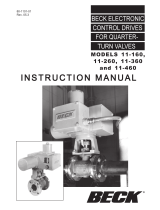 Harold Beck & Sons 11-36X User manual
Harold Beck & Sons 11-36X User manual
-
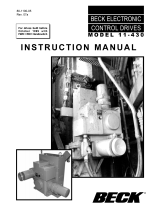 Harold Beck & Sons 11-43X User manual
Harold Beck & Sons 11-43X User manual
-
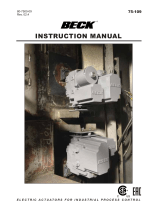 Harold Beck & Sons 75-109 User manual
Harold Beck & Sons 75-109 User manual
-
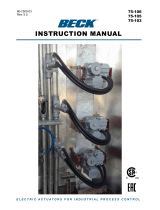 Harold Beck & Sons 75-105 User manual
Harold Beck & Sons 75-105 User manual
-
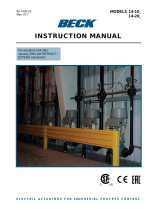 Harold Beck & Sons 14-20X User manual
Harold Beck & Sons 14-20X User manual
-
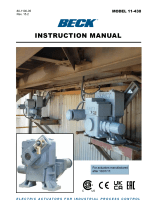 Harold Beck & Sons 11-43X User manual
Harold Beck & Sons 11-43X User manual
-
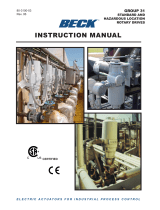 Harold Beck & Sons 31-250 User manual
Harold Beck & Sons 31-250 User manual
-
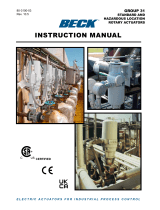 Harold Beck & Sons 31-250 User manual
Harold Beck & Sons 31-250 User manual
Other documents
-
Gleason Reel Limit Switch-Series 15 Installation guide
-
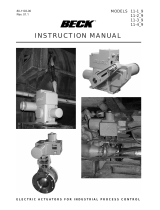 Beck, R&J 11-2_9 User manual
Beck, R&J 11-2_9 User manual
-
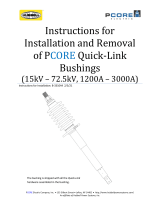 PCORE Electric Quick-Link Bushings (B-331044) Installation guide
PCORE Electric Quick-Link Bushings (B-331044) Installation guide
-
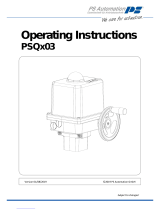 PS Automation PSQ*03 Series Operating Instructions Manual
PS Automation PSQ*03 Series Operating Instructions Manual
-
Intermatic PE24GVA VALVE ACTUATOR User manual
-
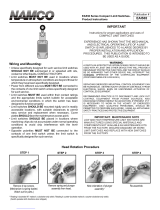 Namco Bandai Games EA530 Series User manual
Namco Bandai Games EA530 Series User manual
-
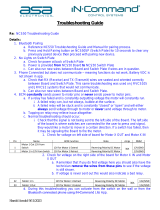 ASA Electronics NCS50SP User guide
ASA Electronics NCS50SP User guide
-
Ascon tecnologic SBD Owner's manual
-
Analog Devices Generic Signal Chains User guide
-
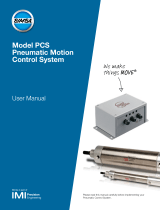 Bimba PCS User manual
Bimba PCS User manual













































































